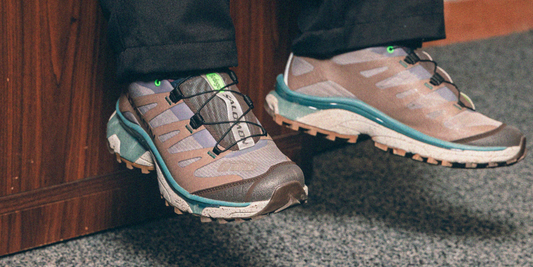Tennis is a sport with a royal pedigree that has managed to retain its upper crust luster. Modern tennis was developed and popularized among British aristocrats and American society types. This pedigree was actually a step down from the earliest forms of the game, which were championed by actual kings, like Louis X of France and Henry VIII of England; that’s how ensconced in luxury the game of tennis is.
The attendant culture that developed around tennis reflected the values of its upper class background. For instance, the predominantly white attire that is inseparably associated with tennis can be traced back to the Victorian list of things thought to be unbecoming, indecent, or, in some other way, objectionable. As tennis was a bit of polite exercise, the presence of visible perspiration on clothing would just not do, hence the advent of sweat hiding tennis whites.
Of course, the flip side to this particular coin is that tennis has a stuffy reputation: tennis bracelets, mixed doubles matches with Biff and Buffy, membership committees, that sort of thing. This reputation isn’t entirely unjustified; even elite players have fallen afoul of Wimbledon's infamous, all-white dress code, but it doesn’t tell the whole story of tennis.
Tennis may retain a country club air, but its still a widely popular spectator and participatory game, and unlike that other sport of kings, tennis has a comparatively low barrier to entry. The minimum requirements, a racket and ball can be picked up for less than one hundred dollars, and public courts are a common part of the urban landscape.
Tennis courts didn’t just spring up on city streets overnight. They were the end product of an early 70s tennis boom that spread the sport to a new audience. If there’s a singular event that can take credit for this, it’s the 1968 decision to abolish allow the game’s top players to compete in the prestige, Grand Slam tournaments that had previously been exclusively amateur.
This act essentially swept international, professional tennis into being overnight, and the prospect of the game’s elites competing against each other made tennis a much more attractive television proposition than it had ever been before. These administrative machinations happened to coincide with the career peaks of a legion of all-time great players. Thanks to the legendary battles between these icons, interest spiked, and participation followed. Tennis was out from behind the country club gates for good.
Even though widespread interest in tennis was inspired by the stars at the summit of the world game, the public courts didn’t become a pipeline to the pros. Picking up a racket for the first time was and remains an individual pursuit, one that is wholly a labor of love.
The NPC has been referred to by it’s initials for so long, that it’s easy to forget that NPC stands for Newport Classic, after the Rhode Island town famous for its opulent mansions, nautical culture, and the Tennis Hall Of Fame. In short, Newport is staunchly and proudly part of the tennis old guard. The original all-white colorway of the NPC is the kind of staid traditionalism guaranteed not to provoke disapproving glares.
All-white may be just fine for immaculately manicured lawns, where you never have to worry about a stray divot, slick spot, or standing puddle, but on the city hard courts, that pristine surface is just begging to be scuffed, splashed, dirtied, and gouged. With that in mind, Bodega’s NPC opts for a brasher approach to luxury. The standard white leather is replaced by a rich, blue suede. A royal purple heel accent adds a touch of class that doesn’t sacrifice personality, while the gum bottom is just plain classic. Ten stars, five on each heel, celebrate the Boston fixture’s tenth year in business.
The Bodega x Reebok NPC UK ‘Decade’ will release on Saturday, August 20, 2016 – online at 10am EST and in-store at 11am. Each pair will come with a branded tennis ball, retail is set at $100.







Photography: Tommy Boudreau
Styling: Ricky Orng
Talent: Sebastian Mikael






